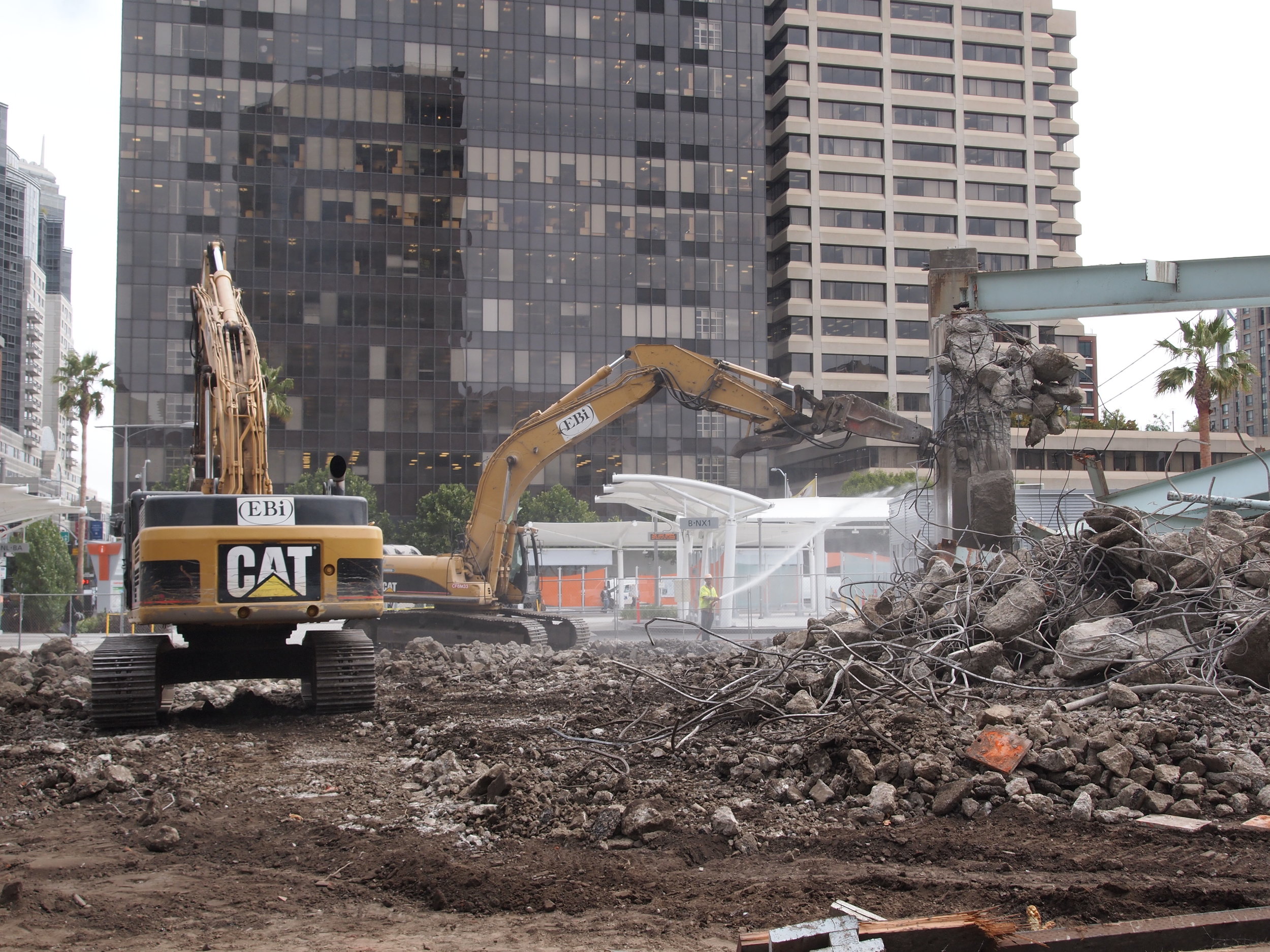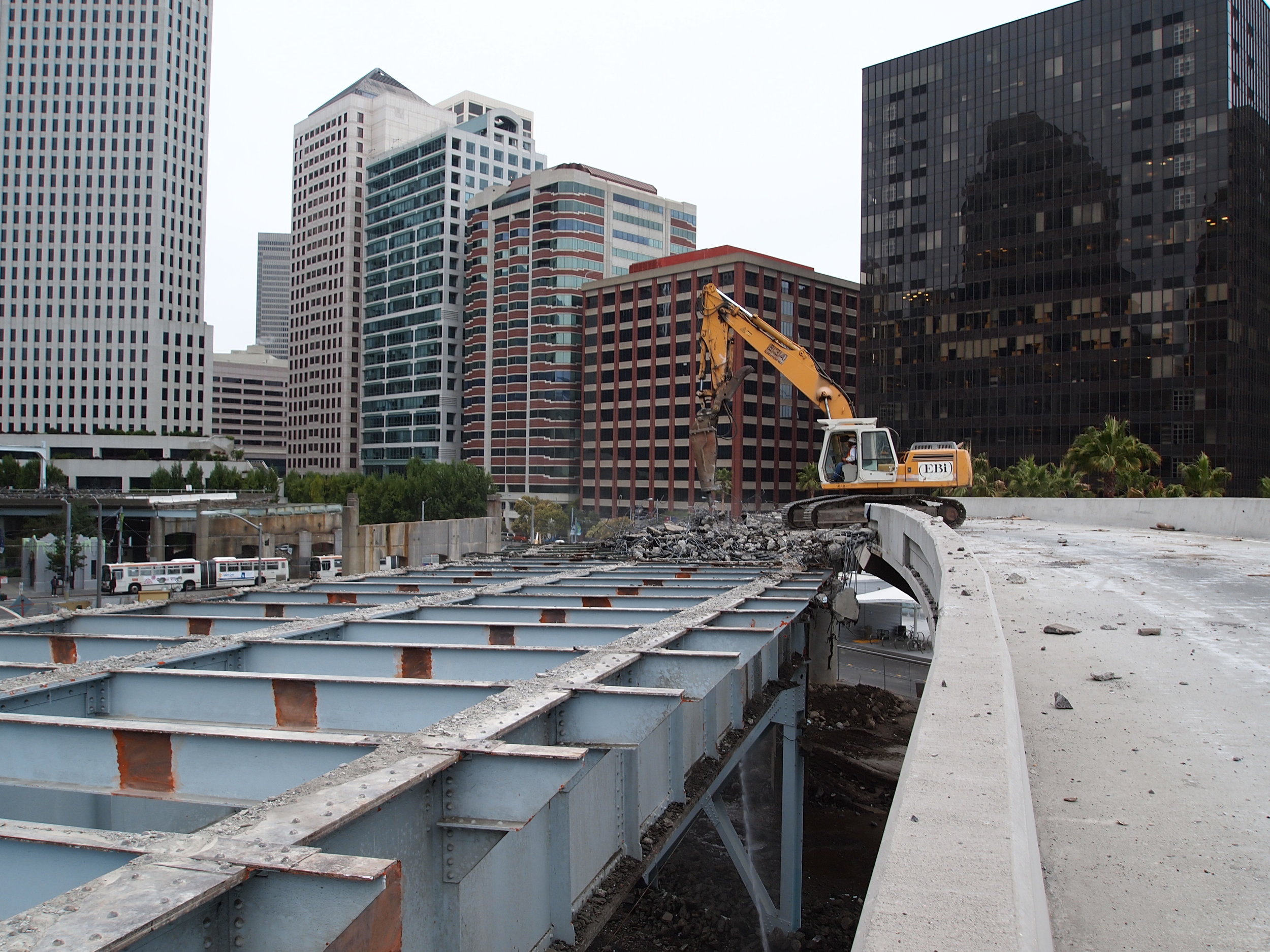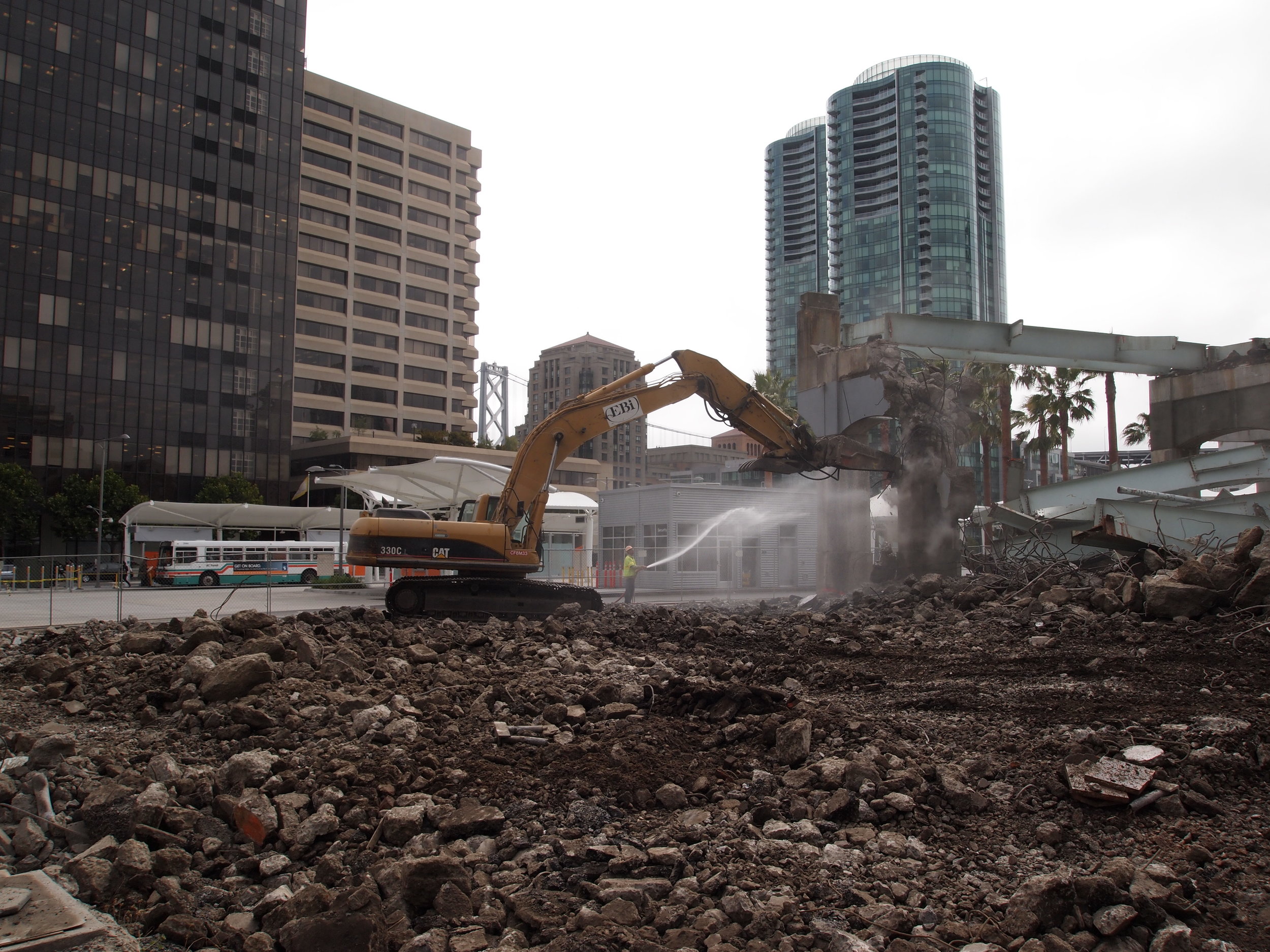Transbay Terminal and Ramps Demolition
/As Phase I of the new Transbay Terminal got underway, Evans Brothers Inc. was awarded the demolition contract. The demolition of the elevated ramps were more than ¾ of a mile, and posed multiple challenges. Several of the buildings along the demolition line are more than 100 years old, and the majority of the demolition footprint was along shared property lines. These buildings, which are all occupied; house multiple high tech, financial brokerages and other businesses sensitive to noise and vibration. In addition to the business occupancy, many of these buildings are residential occupied.
This contract provided for, not only the demolition, in addition, it encompassed the following: asbestos abatement, monitoring of noise, dust and vibration and the relocation / installation of multiple MUNI overhead electrical power lines. Additionally, EBI was required to crush and recycle all of the concrete generated during the demolition, this was in excess of 120,000 tons. Included in the EBI scope was the salvage of historical fabric which will be re-used or displayed in local museums and transit exhibits.
The specification required the preparation of an engineered plan to demolish nine (9) separate street overcrossings and the complete demolition of the existing Transbay Terminal a multi story structure of more than 400,000 square feet. All of the street crossings were completed by scheduling the work on weekends and nights. EBI re-opened all of the closed streets and re-established MUNI services at these locations ahead of schedule
There were also several other smaller structures included in the demolition. To perform this work EBI had to coordinate with all of the requisite City and County of San Francisco agencies including: Public Works, Traffic, Building & Safety, Planning, Environmental Health and the SFPD. The work included street closures and special permits for night work and special noise permits.
Evans Brothers Inc. performed and supervised this work expending more than 65,000 manhours without a lost time injury.





![IMAG0128[3].jpg](https://images.squarespace-cdn.com/content/v1/5c7044009b8fe86530f4f214/1553119881229-8U1IRYQPCZCLDT2WXWVG/IMAG0128%5B3%5D.jpg)
